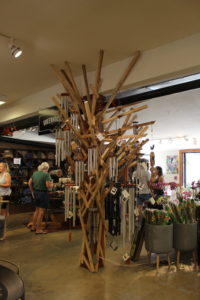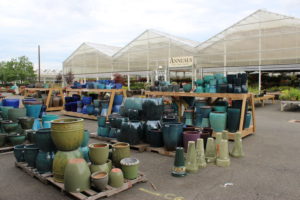
Outside the Vines: Keeping a Robust Inventory
“The more you have, the more you sell.”
It’s an adage businesses have tried to follow for years. But how do you know what to have? How do you know that what you’re adding to your inventory is actually going to interest your consumers?
The key is knowing your customers well enough to know what their go-to’s are, and what new items might pique their interest.
For Double Decker Records in Allentown, Pennsylvania, it’s important to keep classic and collector’s records in stock.
“The easiest market to sell is classic rock late 60s through early 80s,” Jamie Holmes, owner of Double Decker Records says. “The original copies are almost impossible to keep in stock.”
The record store carries new and used LPs, allowing customers the opportunity to buy, sell and trade.
Holmes lets customers know what’s new at the shop by changing the new arrivals display daily and taking to social media to spread the word.
Initially Double Decker relied on Facebook heavily to share new records in stock online.
“But that’s kind of fallen off as Facebook changes how you reach people,” Holmes says.
Now the shop shares new arrivals on Instagram (@doubledeckerrecords), posting photos of record covers and displays daily.
“We add to [inventory] every day,” Holmes says. “A lot of our customers are here weekly, sometimes even daily. They know every time they walk in the door they’re going to see something different.”
Finding a Niche
But don’t be afraid to venture out and change your inventory to more than just what’s comfortable.
When Vertigo Music opened in Grand Rapids, Michigan, in 2000, it started out selling mostly CDs and a small inventory of vinyl.
With the popularity of online music streaming services in the mid-2000s, store manager Herm Baker had to find a new niche to keep his customer base.
“At that moment there was a huge wave of interest developing in vinyl records,” Baker says. He found that other record stores were focusing on older records and selling used. “So it came to our attention that if we were to survive we had to have the new vinyl.”
Vinyl records now account for about 80 percent of Vertigo Music’s inventory, featuring an expanded classic record collection and new releases.
Baker and his staff buy new records directly from labels as much as possible to keep prices aggressive with those of the competitors. Cutting out the middleman keeps prices lower for customers, Baker says.
“I don’t want customers to pay a premium to buy local,” Baker says.
Sharing New Products
With so much inventory its important to know what you have in stock and be able to talk about your inventory with knowledge.
Vertigo Music staff specializes in genres such as hip-hop, jazz and punk rock.
“We don’t hire cashiers, we hire buyers,” Baker says. “That’s their main function to know that stuff, be passionate about that stuff and it shows.”
“Sometimes I’ll hear conversations between my younger employees and my younger customers, and it’s wonderful to hear because they’re just all really into their music. It’s great.”
Double Decker Records and Vertigo Music boost their inventory in the spring for Record Store Day, held annually on the third Saturday in April.
Both shops host an event for customers, celebrating the culture surrounding independently owned record stores.
Vertigo Music adds more than 300 exclusives to their inventory and offers special pricing for the day, as well as having free food, beverages and performances.
Double Decker opens its doors at 8 a.m. to offer customers limited edition releases and albums that aren’t available to download online.
“It’s our busiest day of the year, for sure,” Holmes says. “We get probably about 150 people waiting for the store to open.”
Whether you cater to well-versed customers looking for the classic styles or novice customers following a new trend, adding popular and unique items often will give you a robust inventory.

Two record stores have great ideas for managing a robust inventory, and in a changing market.


















 Videos
Videos





